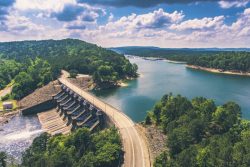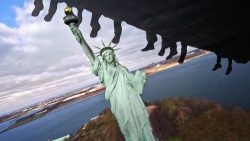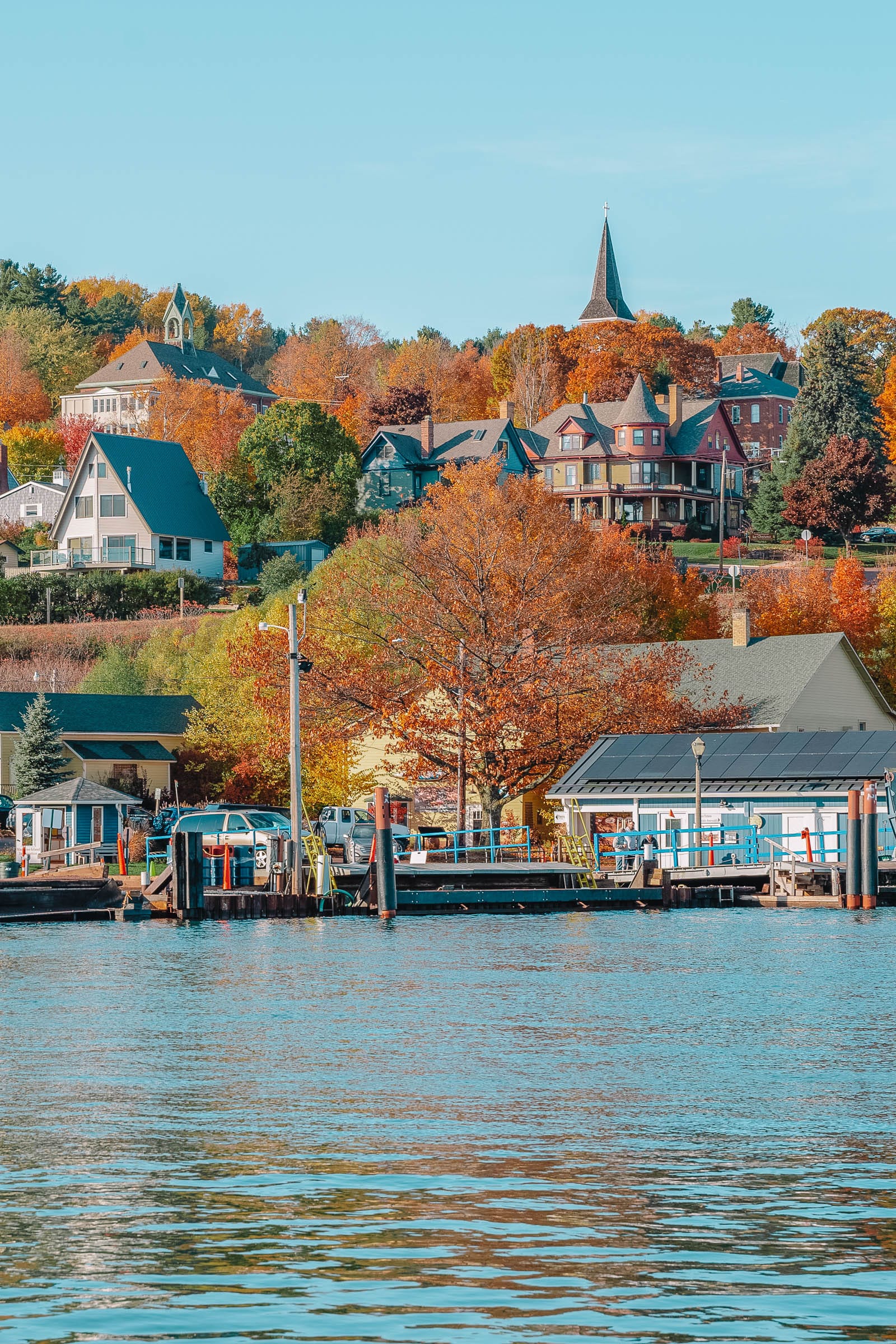Acadia National Park, located on Mount Desert Island in Maine, is a stunning natural wonder that attracts millions of visitors each year. With its diverse landscapes, including mountains, forests, and coastline, Acadia offers a wide range of outdoor activities for nature enthusiasts to enjoy. From hiking and biking to kayaking and wildlife watching, there is something for everyone to experience in this beautiful park.
Outdoor activities are an essential part of the Acadia National Park experience. They allow visitors to immerse themselves in the park’s natural beauty and connect with the environment on a deeper level. Whether you’re seeking adventure or simply looking to relax and enjoy the scenery, Acadia offers a variety of activities that cater to all interests and skill levels.
Key Takeaways
- Acadia National Park offers a variety of outdoor activities, including hiking, biking, kayaking, wildlife watching, rock climbing, camping, scenic drives, photography, ranger-led programs, and winter activities.
- Hiking trails in Acadia National Park offer stunning views of the park’s landscapes and wildlife, with options for all skill levels.
- Biking adventures allow visitors to explore the park on two wheels, with scenic routes and challenging terrain.
- Coastal kayaking offers a unique perspective of Acadia’s scenic waters and diverse marine life.
- Wildlife watching in Acadia National Park provides opportunities to observe a variety of flora and fauna, including moose, bears, and birds.
Hiking Trails: Discovering the Best Routes in Acadia National Park
Acadia National Park is known for its extensive network of hiking trails that wind through its diverse landscapes. From easy strolls to challenging climbs, there is a trail for every hiker in Acadia. Some of the top hiking trails to explore include the Precipice Trail, Jordan Pond Path, and Cadillac Mountain South Ridge Trail.
The Precipice Trail is one of the most popular and challenging hikes in Acadia. It features steep cliffs, iron rungs, and breathtaking views of the park. The Jordan Pond Path is a more leisurely hike that takes you around the picturesque Jordan Pond. It offers stunning views of the surrounding mountains and is a great option for families or those looking for a less strenuous hike. The Cadillac Mountain South Ridge Trail is another must-do hike in Acadia. It takes you to the summit of Cadillac Mountain, the highest peak on the East Coast, and offers panoramic views of the park and surrounding islands.
When hiking in Acadia, it’s important to be prepared and follow safety guidelines. Make sure to wear appropriate footwear and clothing, bring plenty of water and snacks, and be aware of your surroundings. It’s also a good idea to check the weather forecast and trail conditions before heading out.
Biking Adventures: Exploring the Park on Two Wheels
Biking is a popular activity in Acadia National Park, thanks to its well-maintained carriage roads that span over 45 miles. These car-free roads wind through the park’s forests and offer stunning views of the surrounding landscapes. Some of the top biking trails to explore include the Carriage Roads Loop, Eagle Lake Loop, and Jordan Pond Path.
The Carriage Roads Loop is a 20-mile loop that takes you through some of the park’s most scenic areas. It offers a mix of flat and hilly terrain, making it suitable for riders of all skill levels. The Eagle Lake Loop is a shorter, 6-mile loop that takes you around the beautiful Eagle Lake. It offers stunning views of the lake and surrounding mountains. The Jordan Pond Path is also open to bikers and provides a leisurely ride around the picturesque Jordan Pond.
When biking in Acadia, it’s important to follow the park’s rules and regulations. Bikers should yield to pedestrians and horses, stay on designated trails, and be mindful of their speed. It’s also a good idea to wear a helmet and carry basic bike repair tools in case of any mechanical issues.
Coastal Kayaking: Paddling Through the Scenic Waters of Acadia
| Metrics | Values |
|---|---|
| Distance Covered | 10 miles |
| Duration | 4 hours |
| Difficulty Level | Intermediate |
| Number of Participants | 6 |
| Scenic Views | Stunning |
| Wildlife Encounters | Seals, Eagles, and Porpoises |
| Equipment Provided | Kayak, Paddle, Life Jacket |
| Guide | Experienced and Certified |
Acadia National Park is a paradise for kayakers, with its rugged coastline and crystal-clear waters. Kayaking allows visitors to explore hidden coves, paddle through sea caves, and get up close to wildlife such as seals and seabirds. Some of the top kayaking routes to explore include Frenchman Bay, Somes Sound, and Isle au Haut.
Frenchman Bay is a popular kayaking destination in Acadia, offering stunning views of Mount Desert Island and the surrounding islands. Paddling along the coast, you can explore secluded beaches, rocky cliffs, and even spot some marine life. Somes Sound is a deep fjord that cuts through Mount Desert Island and offers a unique kayaking experience. Paddling through the sound, you can admire the towering cliffs and lush forests that surround you. Isle au Haut is a remote island located off the coast of Acadia and is only accessible by boat. Kayaking around the island allows you to explore its pristine beaches, rugged coastline, and diverse wildlife.
When kayaking in Acadia, it’s important to be prepared and follow safety guidelines. Make sure to wear a life jacket at all times, bring a waterproof map and compass, and be aware of tides and currents. It’s also a good idea to paddle with a partner and let someone know your plans before heading out.
Wildlife Watching: Observing the Diverse Flora and Fauna of the Park
Acadia National Park is home to a wide variety of wildlife, including moose, deer, foxes, and over 300 species of birds. Wildlife watching is a popular activity in the park, as it allows visitors to observe these animals in their natural habitat. Some of the top spots for wildlife watching in Acadia include Jordan Pond, Sieur de Monts Spring, and Cadillac Mountain.
Jordan Pond is not only a beautiful spot for hiking and biking but also a great place for birdwatching. The pond attracts a variety of bird species, including loons, herons, and ospreys. Sieur de Monts Spring is another hotspot for wildlife watching in Acadia. The area is known for its diverse plant life, which attracts butterflies and other insects. It’s also a great place to spot deer and other small mammals. Cadillac Mountain is not only famous for its stunning views but also for its bird population. The mountain is a popular spot for birdwatchers, as it offers a chance to see migratory birds such as warblers and falcons.
When observing wildlife in Acadia, it’s important to respect their space and observe from a distance. Do not approach or feed the animals, as this can disrupt their natural behavior and cause harm to both them and you. It’s also a good idea to bring binoculars or a camera with a telephoto lens to get a closer look at the animals without disturbing them.
Rock Climbing: Scaling the Granite Cliffs of Acadia

Acadia National Park is a rock climber’s paradise, with its granite cliffs and stunning views. Rock climbing allows visitors to challenge themselves physically and mentally while enjoying the beauty of the park from a unique perspective. Some of the top climbing routes to explore in Acadia include Otter Cliffs, South Bubble, and Great Head.
Otter Cliffs is one of the most popular rock climbing destinations in Acadia. It offers a variety of routes for climbers of all skill levels, from easy slab climbs to challenging overhangs. The cliffs provide stunning views of the ocean and are a great place to watch the sunset. South Bubble is another popular climbing spot, known for its unique rock formations and challenging routes. The climb to the summit offers panoramic views of Jordan Pond and the surrounding mountains. Great Head is a smaller cliff located on the eastern side of Sand Beach. It offers a variety of routes for climbers of all skill levels and provides stunning views of the coastline.
When rock climbing in Acadia, it’s important to be prepared and follow safety guidelines. Make sure to wear a helmet and harness at all times, use proper climbing techniques, and be aware of your surroundings. It’s also a good idea to climb with a partner and let someone know your plans before heading out.
Camping: Immersing Yourself in Nature at Acadia’s Campgrounds
Camping is a popular way to experience Acadia National Park and immerse yourself in nature. The park offers several campgrounds that provide a range of camping options, from primitive tent sites to RV hookups. Some of the top campgrounds to stay at in Acadia include Blackwoods Campground, Seawall Campground, and Schoodic Woods Campground.
Blackwoods Campground is the most popular campground in Acadia and offers both tent and RV sites. It is located near the park’s main attractions, including Cadillac Mountain and Sand Beach. Seawall Campground is located on the western side of Mount Desert Island and offers tent sites only. It provides a more secluded camping experience and is known for its stunning sunsets. Schoodic Woods Campground is located on the Schoodic Peninsula, which is part of Acadia National Park. It offers both tent and RV sites and provides easy access to hiking trails and scenic views.
When camping in Acadia, it’s important to follow the park’s rules and regulations. Make sure to set up camp in designated areas, practice Leave No Trace principles, and be respectful of other campers. It’s also a good idea to bring all necessary camping gear, including a tent, sleeping bag, cooking equipment, and food.
Scenic Drives: Taking in the Stunning Views of Acadia from the Road
If you prefer to take in the beauty of Acadia National Park from the comfort of your car, there are several scenic drives that offer breathtaking views of the park’s landscapes. Some of the top routes to explore include Park Loop Road, Cadillac Mountain Road, and Jordan Pond Road.
Park Loop Road is a 27-mile loop that takes you through some of the most scenic areas of Acadia. It offers stunning views of the coastline, mountains, and forests, as well as access to popular attractions such as Sand Beach and Thunder Hole. Cadillac Mountain Road is a 3.5-mile road that takes you to the summit of Cadillac Mountain, the highest peak in Acadia. The road offers panoramic views of the park and surrounding islands, especially at sunrise and sunset. Jordan Pond Road is a 3-mile road that takes you to the picturesque Jordan Pond. It offers stunning views of the pond and surrounding mountains, as well as access to hiking trails and the Jordan Pond House.
When driving in Acadia, it’s important to be mindful of other drivers, cyclists, and pedestrians. Observe the speed limit and be aware of any wildlife that may be crossing the road. It’s also a good idea to pull over at designated viewpoints to take photos or simply enjoy the scenery.
Photography: Capturing the Beauty of Acadia’s Landscapes and Wildlife
Acadia National Park offers endless opportunities for photographers to capture its stunning landscapes and diverse wildlife. Whether you’re a professional photographer or just enjoy taking pictures, there are plenty of spots in the park that will inspire you. Some of the top spots for photography in Acadia include Cadillac Mountain, Bass Harbor Head Lighthouse, and Jordan Pond.
Cadillac Mountain is a popular spot for photographers, especially at sunrise and sunset. The mountain offers panoramic views of the park and surrounding islands, making it a great place to capture stunning landscapes. Bass Harbor Head Lighthouse is another iconic spot for photography in Acadia. The lighthouse is perched on a rocky cliff and provides a picturesque backdrop for photos. Jordan Pond is not only a beautiful spot for hiking and biking but also a great place for photography. The pond offers stunning reflections of the surrounding mountains and is a popular spot for capturing fall foliage.
When photographing in Acadia, it’s important to respect the environment and wildlife. Do not disturb or approach animals, as this can cause stress and harm to them. It’s also a good idea to bring a tripod and filters to enhance your photos, as well as extra batteries and memory cards.
Ranger-Led Programs: Learning about Acadia’s History and Ecology
Acadia National Park offers a variety of ranger-led programs that allow visitors to learn about the park’s history, ecology, and conservation efforts. These programs provide a unique opportunity to explore the park with knowledgeable guides and gain a deeper understanding of its natural and cultural resources. Some of the top programs to participate in include guided hikes, nature walks, and evening campfire programs.
Guided hikes are a great way to explore Acadia’s trails while learning about its flora, fauna, and geology. These hikes are led by park rangers who provide interesting facts and insights along the way. Nature walks are shorter, more leisurely walks that focus on specific topics such as birdwatching or wildflower identification. These walks are a great option for families or those looking for a more relaxed experience. Evening campfire programs are held at various campgrounds in Acadia and feature presentations on topics such as wildlife conservation, night sky viewing, and Native American history.
Participating in ranger-led programs not only enhances your visit to Acadia but also supports the park’s conservation efforts. The programs are free and open to all visitors, making them accessible to everyone.
Winter Activities: Skiing, Snowshoeing, and Ice Fishing in Acadia National Park
While Acadia National Park is known for its summer activities, it also offers a variety of winter activities for those who enjoy the snow. From skiing and snowshoeing to ice fishing and winter hiking, there are plenty of ways to enjoy the park’s beauty during the colder months. Some of the top activities to participate in include cross-country skiing on the carriage roads, snowshoeing on the park’s trails, and ice fishing on Jordan Pond.
Cross-country skiing is a popular winter activity in Acadia, thanks to its well-groomed carriage roads. These car-free roads provide a perfect surface for skiing and offer stunning views of the park’s winter landscapes. Snowshoeing is another great way to explore Acadia’s trails during the winter months. The park’s trails are less crowded in the winter, making it a peaceful and serene experience. Ice fishing is a unique activity that allows visitors to experience the park’s frozen lakes and ponds. Jordan Pond is a popular spot for ice fishing, as it is home to a variety of fish species.
When participating in winter activities in Acadia, it’s important to be prepared and follow safety guidelines. Dress in layers, wear appropriate footwear, and bring plenty of water and snacks. It’s also a good idea to check the weather forecast and trail conditions before heading out.
Acadia National Park offers a wide range of outdoor activities that allow visitors to explore its diverse landscapes and connect with nature. Whether you’re hiking along its scenic trails, biking through its car-free roads, kayaking along its rugged coastline, or observing its diverse wildlife, there is something for everyone to enjoy in this beautiful park. From rock climbing and camping to scenic drives and photography, Acadia offers endless opportunities for adventure and relaxation.
So, if you’re looking to escape the hustle and bustle of everyday life and immerse yourself in nature, consider visiting Acadia National Park. With its stunning landscapes, diverse wildlife, and wide range of outdoor activities, it’s the perfect destination for nature lovers and adventure seekers alike. Whether you’re interested in hiking along the rugged coastline, biking through picturesque trails, or simply taking in the breathtaking views from atop Cadillac Mountain, Acadia National Park offers something for everyone. The park is also home to an array of wildlife, including moose, deer, and various bird species, making it a haven for nature enthusiasts and photographers. Additionally, Acadia National Park boasts numerous campgrounds and picnic areas, allowing visitors to fully immerse themselves in the beauty of the great outdoors. So, if you’re craving a break from the chaos of city life, Acadia National Park is the ideal place to reconnect with nature and find peace and tranquility.
FAQs
What is Acadia National Park?
Acadia National Park is a national park located in the state of Maine, USA. It covers an area of 49,075 acres and includes mountains, forests, lakes, and coastline.
What are some popular things to do in Acadia National Park?
Some popular things to do in Acadia National Park include hiking, biking, camping, wildlife watching, bird watching, fishing, kayaking, and canoeing.
What are some popular hiking trails in Acadia National Park?
Some popular hiking trails in Acadia National Park include the Precipice Trail, the Beehive Trail, the Jordan Pond Path, and the Cadillac Mountain South Ridge Trail.
What is the best time to visit Acadia National Park?
The best time to visit Acadia National Park is during the summer months of June, July, and August when the weather is warm and the park is open for all activities.
What is the entrance fee for Acadia National Park?
The entrance fee for Acadia National Park is $30 per vehicle for a 7-day pass, $25 per motorcycle for a 7-day pass, and $15 per person for a 7-day pass for those entering on foot or bicycle.
Are there any guided tours available in Acadia National Park?
Yes, there are several guided tours available in Acadia National Park, including ranger-led hikes, boat tours, and bus tours. These tours can be booked in advance or on the day of the tour, depending on availability.
- Unveiling the Truth: Weightlifting for Women and Strength Building - November 4, 2024
- The Ultimate Guide to Weightlifting for Beginners - November 4, 2024
- Boost Your Mood and Ease Anxiety with Cardio Exercises - November 4, 2024




